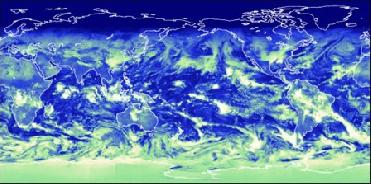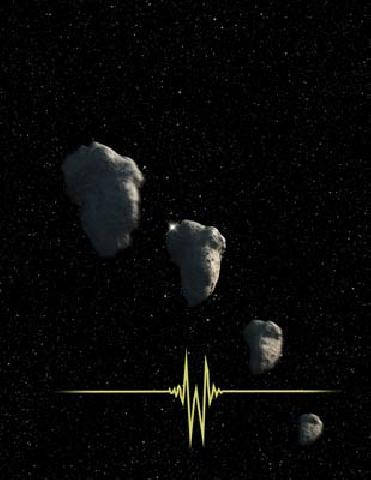
A File Photo of Winter Solstice, December 22, 2004. Image Credit: NASA/Takmeng Wong/CERES Science Team at NASA Langley Research Center.
A solstice is an astronomical phenomenon which occurs twice a year and is based on the position of the Earth in relation to the sun. The term is derived from the Latin sol (sun) and sistere (to stand still).
The Earth revolves around the sun once per year. The seasons on Earth are caused by the tilt of the Earth on its axis, which is approximately 23.5 degrees. As the earth revolves around the sun its axis is continually tilted in the same direction. If one extended the line of the axis into space it would touch Polaris, or the North Star. As the earth rotates around its axis Polaris appears to remain in the same place while all the stars rotate around it.
Twice a year the earth is tilted directly toward or away from the sun. These days are called Solstices – the longest and shortest day of the year. In the northern hemisphere the longest day of the year falls on June 21st. This is the day when the sun illuminates the largest area of the northern hemisphere, resulting in more hours of daylight as the earth rotates. The shortest day of the year is December 21st. This is the day the sun illuminates the least surface area and the northern hemisphere receives the fewest hours of daylight.
During the summer solstice, the sun is overhead at its nearest point, above the Tropic of Cancer. At the time of Winter Solstice, the sun is furthest away, over the Tropic of Capricorn.
On Winter Solstice, the polar North receives no energy from the Sun. In contrast, the amount of incoming solar energy the Earth receives on June 21, Summer Solstice, is 30 percent higher at the North Pole than at the Equator.
Twice a year the earth’s tilt is neither towards nor away from the sun, it is perpendicular to the sun. These days are called Equinoxes – meaning equal day and equal night. All areas of the northern and southern hemisphere are equally illuminated. On these two days of the year there are 12 hours of light and 12 hours of darkness everywhere on earth. The autumnal, or fall, equinox occurs on September 22nd, and the vernal, or spring, equinox occurs on March 20th.
The solstices, together with the equinoxes, are connected with the seasons. Therefore most cultures and religious traditions honour these days with celebrations and festivals of various kind. For the June solstice, Christian and Pagan cultures observe the feat of St. John, St. John's Eve, 1 Ivan Kupala Day or Midsummer. The December solstice marks a holiday season cultures honour. Christmas, Yalda, Saturnalia, Hanukkah, Kwanzaa, Yule, Karachun are the most notable. The equinoxes also have their spring and autumn observances, and in some cultures the midpoints between these - called cross-quarter days - are also celebrated.
Brief Summary
Summer solstice - the longest day of the year, when the Sun is at its most northern point in the sky.
Autumn equinox - day and night are each 12 hours long and the Sun is at the midpoint of the sky.
Winter solstice - the shortest day of the year, when the Sun is at its most southern point in the sky.
Spring equinox - day and night are each 12 hours long and the Sun is at the midpoint of the sky.
- Courtesy:
NASA
BBC
 Previous Article
Previous Article












The Indian Air Force, in its flight trials evaluation report submitted before the Defence Ministry l..
view articleAn insight into the Medium Multi-Role Combat Aircraft competition...
view articleSky enthusiasts can now spot the International Space Station (ISS) commanded by Indian-American astr..
view article